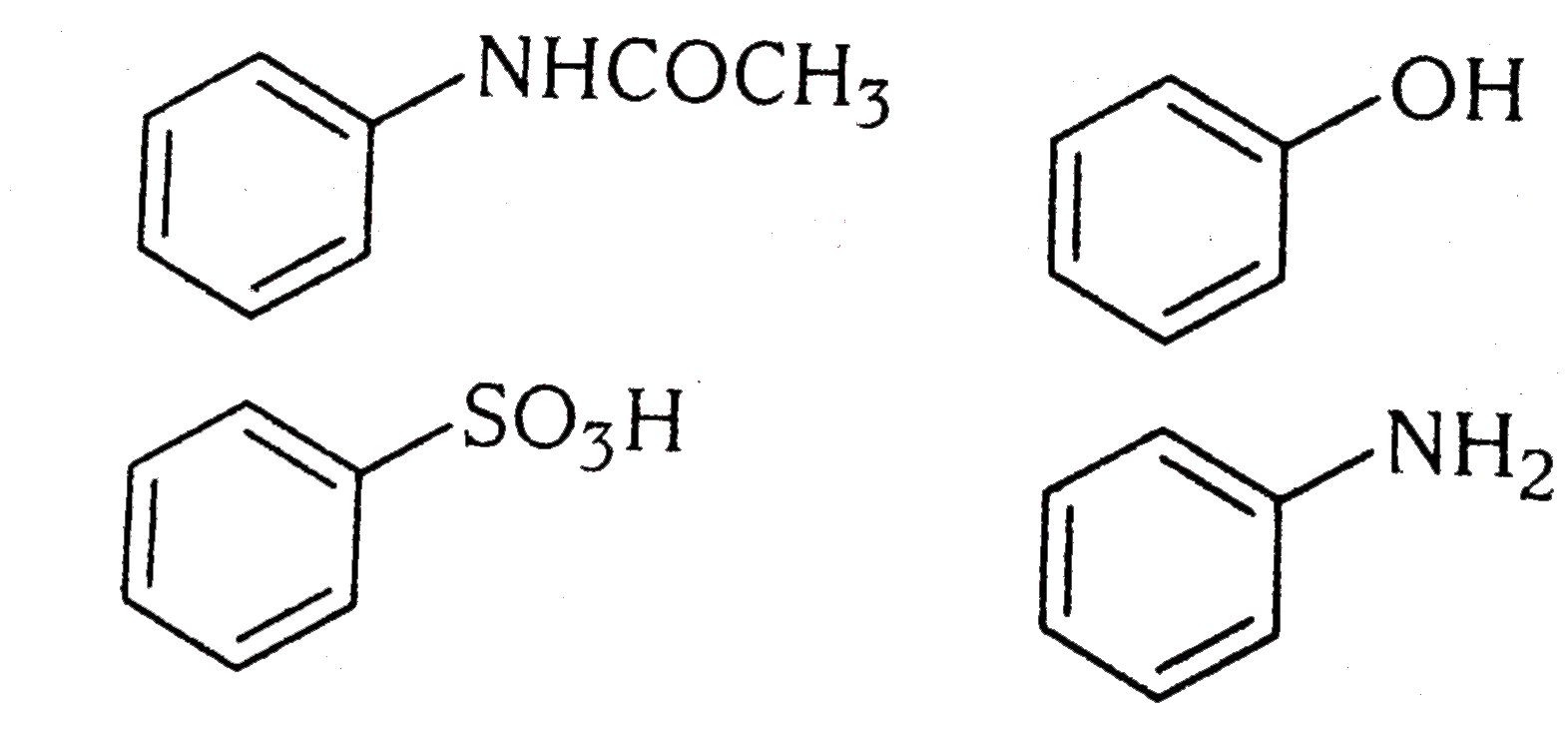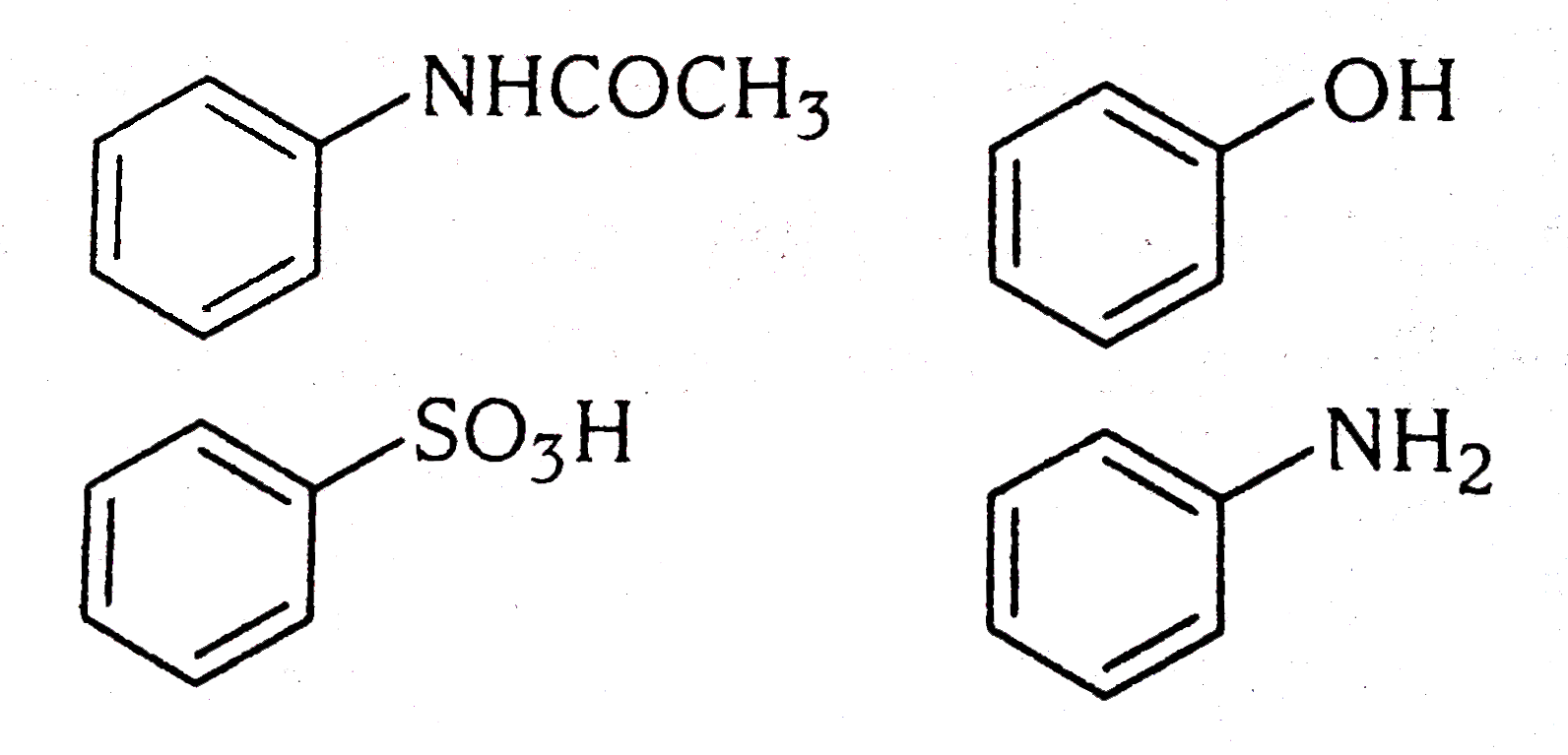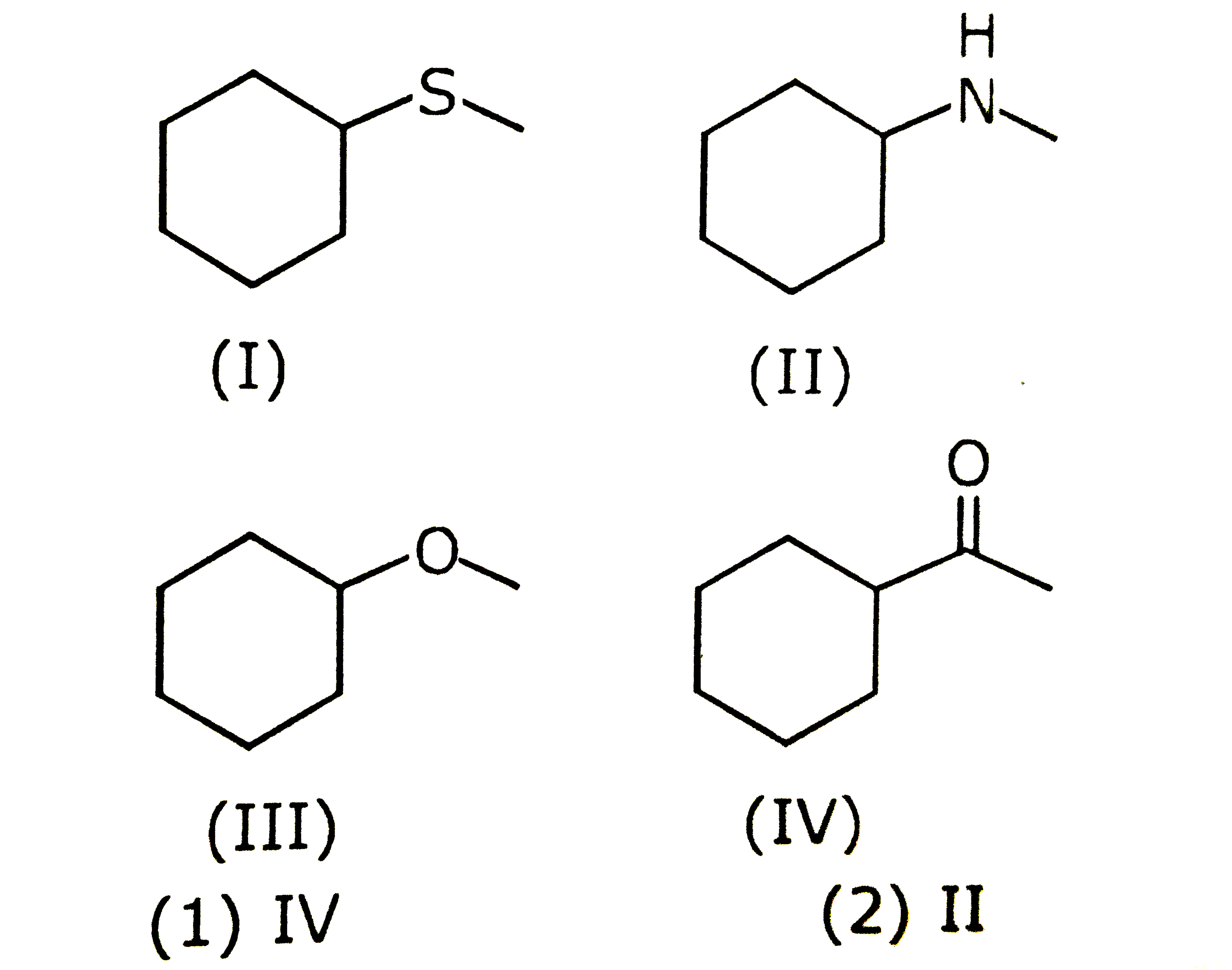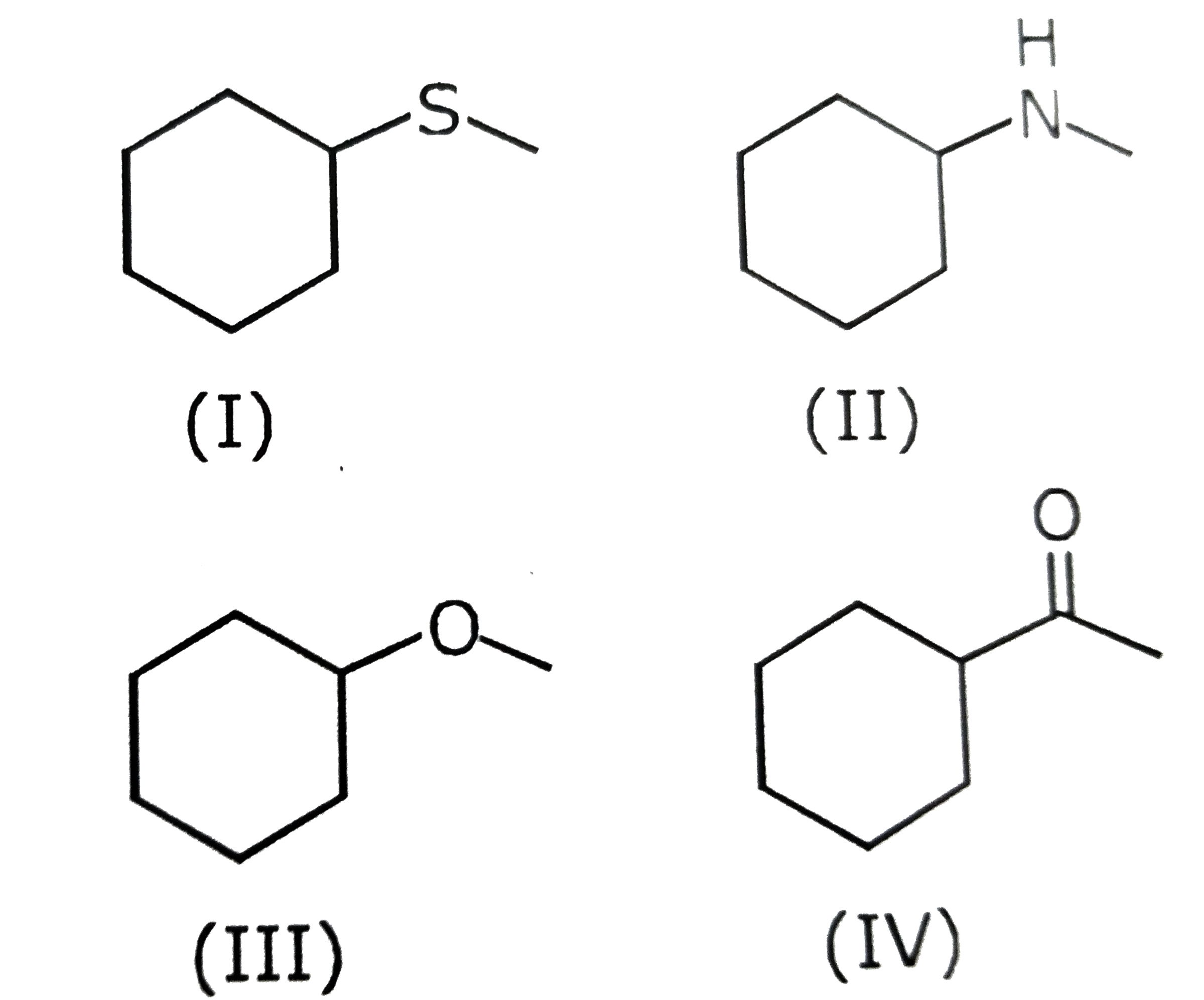Mixture of two isomeric amines (C2H7N)A and B was treated with benzene sulphonyl chloride and NaOH and ether were added. Two layers were separated. Ethereal layer containing A on acidification followed by distillation generates A . Aqueous layer containing (B) followed by acidification and distillation generates (B)
Compound in ethereal layer is in the formSolution in Malayalam


Both (A) and (B)
None of the above
The correct Answer is:B
Step by step video, text & image solution for Mixture of two isomeric amines (C_2 H_7 N)A and B was treated with benzene sulphonyl chloride and NaOH and ether were added. Two layers were separated. Ethereal layer containing A on acidification followed by distillation generates A . Aqueous layer containing (B) followed by acidification and distillation generates (B) Compound in ethereal layer is in the form by Chemistry experts to help you in doubts & scoring excellent marks in Class 12 exams.
Updated on:21/07/2023Topper's Solved these Questions
- NITROGEN COMPOUNDSBOOK - BRILLIANT PUBLICATIONCHAPTER - NITROGEN COMPOUNDSEXERCISE - LEVEL-III (Statement Type)
5 Videos
- HALOALKANES AND HALOARENESBOOK - BRILLIANT PUBLICATIONCHAPTER - HALOALKANES AND HALOARENESEXERCISE - Level-II
37 Videos
- NUCLEAR CHEMISTRY BOOK - BRILLIANT PUBLICATIONCHAPTER - NUCLEAR CHEMISTRY EXERCISE - LEVEL-III (Linked Comprehension Type)
11 Videos
Similar Questions
Statement 1 : Alkyl cyanide can be prepared by carbylamine reaction.
Statement 2 : Ethyl amine when heated with chloroform in presence of alcoholic KOH gives isocyanide
View SolutionWhich is incorrect in the physical properties of halogen compounds ?
View SolutionA sample contains 10−2 kg of two substances A and B with half lives of 4 and 8 sec repsectively (Given that atomic mass of B is twice of A ).
The mass of A and B left after 16 second is :
View SolutionAn analust is trying to separate a mixture containing the following four organic compounds She dissolved the mixture in ether and treated the solution with aqueous NaOH solution and finally separated the two fractions: Fraction-I (ether) and Fraction-II (aqueous). Later she acidified Fraction-1 and was able to distill the organic compound(s) into ether to obtain third fraction, Fraction-III. Fraction-III was then treated with aqueous NaHCO_(3) and the two layers, ether layer (Fraction-IV) and aqueous layer (Fraction-V) were separated. Also Fraction-I was treated with aqueous HCl solution and the two layers, other (Fraction-VI) and aquores layer (Fraction-VII) were seperated. Answer the following three questions based on the above information. Fraction-V on acidification followed by distillation will give
View SolutionAn analust is trying to separate a mixture containing the following four organic compounds

She dissolved the mixture in ether and treated the solution with aqueous NaOH solution and finally separated the two fractions: Fraction-I (ether) and Fraction-II (aqueous). Later she acidified Fraction-1 and was able to distill the organic compound(s) into ether to obtain third fraction, Fraction-III. Fraction-III was then treated with aqueous NaHCO3 and the two layers, ether layer (Fraction-IV) and aqueous layer (Fraction-V) were separated. Also Fraction-I was treated with aqueous HCl solution and the two layers, other (Fraction-VI) and aquores layer (Fraction-VII) were seperated. Answer the following three questions based on the above information.
The species left in fraction VI is
View SolutionAn analust is trying to separate a mixture containing the following four organic compounds

She dissolved the mixture in ether and treated the solution with aqueous NaOH solution and finally separated the two fractions: Fraction-I (ether) and Fraction-II (aqueous). Later she acidified Fraction-1 and was able to distill the organic compound(s) into ether to obtain third fraction, Fraction-III. Fraction-III was then treated with aqueous NaHCO3 and the two layers, ether layer (Fraction-IV) and aqueous layer (Fraction-V) were separated. Also Fraction-I was treated with aqueous HCl solution and the two layers, other (Fraction-VI) and aquores layer (Fraction-VII) were seperated. Answer the following three questions based on the above information.
What is true about the species left in fraction-IV?
View SolutionTwo liquids A and B are partially miscible (Molecular mass A=20, Molecular mass B=40 ). On mixing 1 mol of A with 3 moles of B, two different layers M and N are formed with layer M containing 0.2 mole fraction of A and layer N containing 0.6 mole fraction of A. The ratio of masses of layer M to layer N will be :
View SolutionAn ether solution of PhCH_(3) (I), PhNH_(2) (II) and PhOH (III) is extracted with squeous NAOH . The ether layer will contain which compound(s) after the extraction ?
View SolutionA mixture containing the following four compounds is extracted with 1 M HCl. The compound that goes to aqueous layer is :
View SolutionA mixture containing the following four compounds is extracted with 1 M HCl. The compound that goes to aqueous layer is :
View Solutionवायुमंडल की परतो से परावर्तित तरंग को व्योम तरंग कहते है।
View Solutionযখন H2O2, -কে K2Cr2O7, -এর আম্লিক দ্রবণের সাথে ইথারের উপস্থিতিতে ঝাঁকানো হয়, তখন নিম্নলিখিত কোনটি তৈরি হওয়ার ফলে ইথারীয় স্তর নীল বর্ণ ধারণ করে –
View SolutionH2O2-কে K2Cr2O7-এর আম্লিক ইথারীয় দ্রবণের উপস্থিতিতে ঝাঁকালে ইথার স্তর নীল বর্ণ ধারণ করে নিম্নলিখিত কোনটি তৈরি হওয়ার কারণে-
View Solutionஈதரின் முன்னிலையில், பொட்டாசியம் டைகுரோமேட் கரைசலுடன் ஹைட்ரஜன் பெராக்சைடு சேர்த்து குலுக்கப்படும்போது. ஈதர் அடுக்கானது நீலநிறமாக மாறுவதற்குக் காரணமாக, உருவாவது
View SolutionA mixture containing the following four compounds is extracted with 1 M HCl. The compound that goes to aqueous layer is :

View SolutionA mixture containing the following four compounds is extracted with 1 M HCl. The compound that goes to aqueous layer is :

View Solution
